Sustainable Farming Future: Lida Group Delivers Eco-Friendly, High-Quality Steel Farm Houses Using Recycled Materials
2025-Aug-26 13:27:39
By Admin
1. Introduction
The global agricultural sector stands at a critical crossroads. As the world’s population is projected to reach 9.7 billion by 2050, the demand for food production is expected to increase by 60% compared to 2010 levels. Yet, traditional farming practices and infrastructure have long been associated with significant environmental challenges: deforestation for farmland expansion, high carbon emissions from construction and energy use, excessive waste generation, and the depletion of natural resources such as water and raw materials. In response, the concept of sustainable farming has emerged as a urgent and necessary solution—one that balances food security with environmental stewardship, social equity, and long-term economic viability.
A often-overlooked component of sustainable farming is the design and construction of farm houses and supporting agricultural structures. Farm houses serve as the operational and residential heart of agricultural operations, housing farmers’ families, storing equipment and crops, and facilitating on-site processing. However, conventional farm houses—built with brick, concrete, or virgin wood—contribute to environmental degradation: concrete production alone accounts for 8% of global carbon dioxide emissions, while wood harvesting can lead to deforestation if not sustainably managed. Moreover, these structures often have short lifespans, requiring frequent repairs or replacements that further drain resources.
Lida Group, a global leader in innovative steel structure design and construction, is addressing this gap with its eco-friendly, high-quality steel farm houses built using recycled materials. By prioritizing sustainability without compromising on strength, durability, or functionality, Lida Group is redefining what farm infrastructure can be—turning it from a source of environmental harm into a driver of sustainable farming. This article explores how Lida Group’s use of recycled materials, combined with eco-conscious design and manufacturing processes, is shaping the future of sustainable farming. It delves into the technical advantages of recycled steel, the environmental benefits of the company’s solutions, real-world case studies of successful implementations, and the long-term impact these farm houses have on farmers, communities, and the planet.
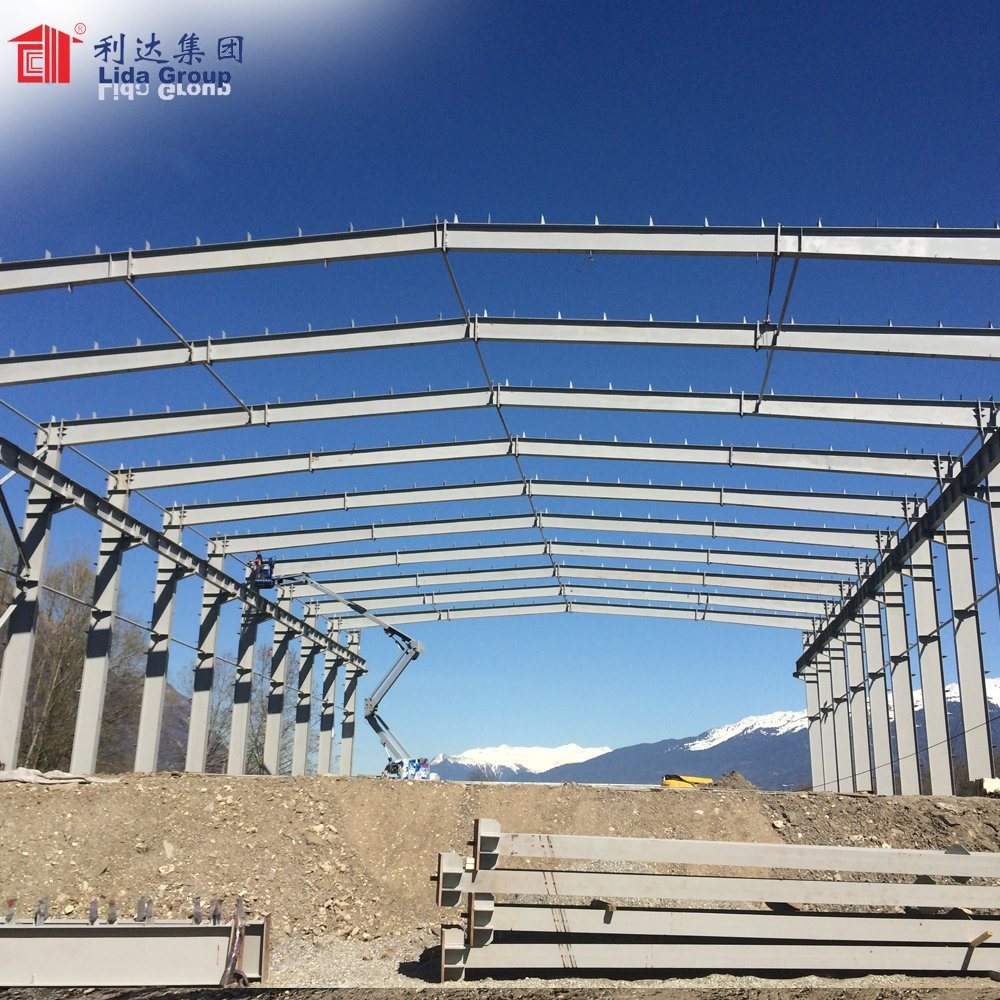
2. The Role of Eco-Friendly Farm Infrastructure in Sustainable Farming
To fully appreciate the impact of Lida Group’s solutions, it is essential to understand why eco-friendly farm infrastructure is a cornerstone of sustainable farming. Sustainable farming is not just about how crops are grown or livestock are raised—it encompasses every aspect of agricultural operations, from resource use to waste management to the built environment. Farm houses, in particular, play a pivotal role in this ecosystem for several key reasons:
2.1 Reducing Carbon Footprint
The construction industry is responsible for approximately 38% of global carbon emissions, with a large portion coming from the production of building materials. Conventional farm houses built with concrete, brick, or virgin wood require significant energy to manufacture and transport these materials. For example, producing one ton of concrete emits approximately 0.8 tons of carbon dioxide, while harvesting and processing virgin wood for construction contributes to deforestation (a major source of carbon sequestration loss). Eco-friendly farm houses, by contrast, use materials that minimize these emissions—such as recycled steel, which requires far less energy to produce than virgin steel.
2.2 Conserving Natural Resources
Sustainable farming aims to use natural resources efficiently and avoid depletion. Conventional construction materials rely heavily on non-renewable resources (e.g., limestone for concrete, iron ore for virgin steel) or renewable resources that are overharvested (e.g., wood). Recycled materials, however, repurpose existing resources, reducing the need for new extraction. For example, using recycled steel in farm houses reduces the demand for iron ore mining, which disrupts ecosystems, contaminates water sources, and destroys habitats. Additionally, eco-friendly farm houses often incorporate water-saving and energy-saving features that align with sustainable farming’s resource conservation goals.
2.3 Minimizing Waste
The construction and demolition of conventional farm houses generate massive amounts of waste. In many countries, construction and demolition waste accounts for 30–40% of all solid waste sent to landfills. Conventional farm houses, with their short lifespans and rigid designs, often end up being demolished and replaced within 20–30 years, adding to this waste stream. Eco-friendly farm houses, by contrast, are designed for durability (with lifespans of 50+ years) and modularity (allowing for repairs or expansions instead of full demolition). When they do reach the end of their lifespan, their recycled materials can be repurposed again, closing the loop on waste.
2.4 Supporting On-Site Sustainability
Eco-friendly farm houses are not just sustainable in their construction—they also support sustainable farming practices on-site. For example, they can be designed to integrate renewable energy systems (such as solar panels on the roof), collect and store rainwater for irrigation, or provide space for composting organic waste. These features help farmers reduce their reliance on external energy and water sources, lower their operational costs, and minimize their environmental impact.
2.5 Enhancing Resilience to Climate Change
Climate change poses a major threat to agriculture, with extreme weather events (e.g., droughts, floods, hurricanes) becoming more frequent and severe. Conventional farm houses are often vulnerable to these events—wooden structures rot in floods or burn in wildfires, while brick-and-concrete structures crack in earthquakes or collapse under heavy snow. Eco-friendly farm houses, built with durable materials like recycled steel, are more resilient to extreme weather, protecting farmers’ homes, equipment, and crops. This resilience is a key component of sustainable farming, which seeks to ensure food security even in the face of climate change.
Despite these benefits, the adoption of eco-friendly farm infrastructure has been slow in many regions. This is due in part to misconceptions that eco-friendly materials are less durable or more expensive than conventional ones, or that they cannot meet the functional needs of modern farming. Lida Group’s recycled steel farm houses are addressing these misconceptions, proving that sustainability, strength, and affordability can coexist.
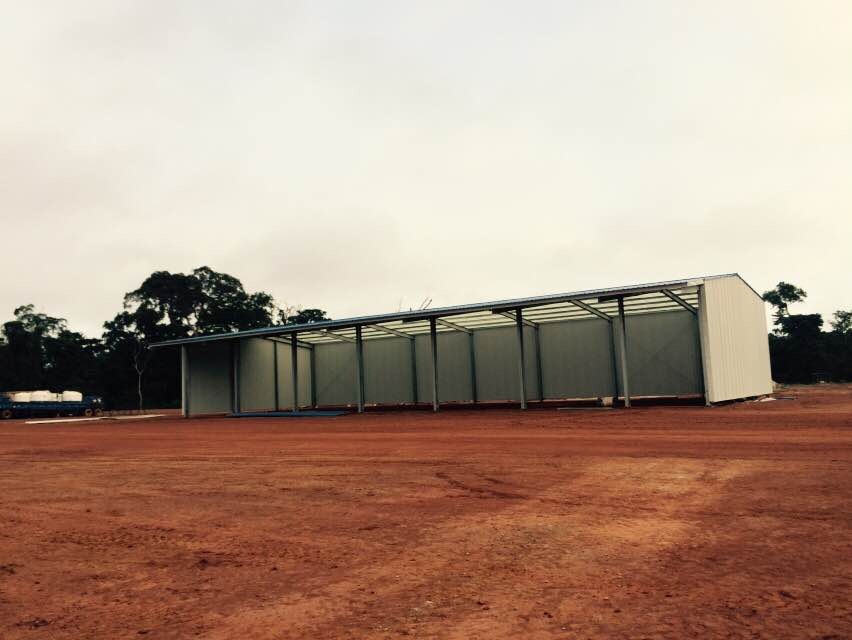
3. Lida Group’s Recycled Steel: The Foundation of Eco-Friendly Farm Houses
At the core of Lida Group’s eco-friendly farm houses is the use of high-quality recycled steel. Recycled steel is not only environmentally friendly—it also offers exceptional strength, durability, and versatility, making it ideal for the demands of agricultural operations. Lida Group’s approach to recycled steel begins with careful sourcing and processing, ensuring that the material meets the highest standards of quality and performance.
3.1 Sourcing and Processing Recycled Steel
Lida Group sources recycled steel from reputable global suppliers that collect and process scrap steel from a variety of sources, including:
- End-of-life vehicles: Cars, trucks, and agricultural machinery that are no longer in use, which contain large amounts of steel that can be recycled.
- Construction and demolition waste: Steel beams, columns, and panels from old buildings or infrastructure that are being demolished.
- Industrial scrap: Leftover steel from manufacturing processes, such as cuttings or offcuts from steel production.
The processing of recycled steel involves several key steps, all of which are far less energy-intensive than the production of virgin steel:
- Collection and sorting: Scrap steel is collected from various sources and sorted by type (e.g., carbon steel, stainless steel) to ensure purity.
- Shredding and melting: The sorted scrap is shredded into small pieces and melted in an electric arc furnace (EAF). Unlike the blast furnaces used to produce virgin steel (which rely on coal and emit large amounts of carbon dioxide), EAFs use electricity—much of which can be sourced from renewable energy.
- Purification and casting: The molten steel is purified to remove impurities (e.g., sulfur, phosphorus) and then cast into slabs, billets, or coils, which are then rolled into the steel sections (beams, columns, panels) used in farm house construction.
3.2 Environmental Benefits of Recycled Steel
The use of recycled steel in Lida Group’s farm houses delivers significant environmental benefits compared to virgin steel and other conventional construction materials:
3.2.1 Reduced Carbon Emissions
Producing recycled steel requires 74% less energy than producing virgin steel. This translates to a 58% reduction in carbon dioxide emissions per ton of steel. For example, producing one ton of virgin steel emits approximately 1.8 tons of carbon dioxide, while producing one ton of recycled steel emits only 0.75 tons. For a typical 200-square-meter Lida Group farm house, which uses approximately 10 tons of steel, this results in a carbon dioxide reduction of 10.5 tons—equivalent to planting 58 trees and letting them grow for 10 years.
3.2.2 Conservation of Natural Resources
Using recycled steel reduces the demand for iron ore (the primary raw material for virgin steel) and coal (used in blast furnaces). Iron ore mining is a highly destructive process that requires clearing large areas of land, digging deep pits, and using large amounts of water. By using recycled steel, Lida Group’s farm houses conserve approximately 1.4 tons of iron ore and 0.7 tons of coal per ton of steel used. Additionally, recycling steel reduces the need for landfill space—each ton of recycled steel saves 1.2 cubic meters of landfill space that would otherwise be used for scrap steel.
3.2.3 Water Conservation
Steel production is a water-intensive process, but recycled steel production uses far less water than virgin steel production. Producing one ton of virgin steel requires approximately 25,000 liters of water, while producing one ton of recycled steel uses only 6,000 liters—a reduction of 76%. For a 200-square-meter farm house, this means a water savings of 190,000 liters—enough to meet the drinking water needs of a family of four for over 13 years.

3.3 Quality and Performance of Recycled Steel
A common misconception about recycled steel is that it is less strong or durable than virgin steel. However, this is not the case. Steel is a highly recyclable material that retains its mechanical properties (e.g., strength, ductility, toughness) through multiple recycling cycles. Lida Group’s recycled steel meets the same rigorous standards as virgin steel, including:
3.3.1 Strength and Load-Bearing Capacity
Lida Group uses recycled steel that meets the specifications of S355JR structural steel—a high-strength grade with a minimum yield strength of 355 MPa (megapascals). This is significantly higher than the yield strength of standard mild steel (235 MPa) and is more than sufficient to support the loads of farm house operations, such as:
- Heavy equipment storage: Forklifts, tractors, and harvesters weighing up to 10,000 kg.
- Crop storage: Pallets of grains, fruits, or vegetables stacked up to 5 layers high (total load of 5,000 kg per square meter).
- Roof-mounted systems: Solar panels, HVAC units, or rainwater collection tanks.
3.3.2 Corrosion Resistance
Like virgin steel, recycled steel is susceptible to corrosion if not protected—especially in agricultural environments, where exposure to moisture (from irrigation or livestock), chemicals (fertilizers, pesticides), or salt (in coastal areas) is common. Lida Group addresses this by treating recycled steel components with the same corrosion-resistant coatings used for virgin steel:
- Hot-dip galvanizing: Recycled steel components are submerged in molten zinc, forming a thick, adherent coating that resists corrosion for 20–50 years (depending on the environment).
- Polyester powder coating: For additional protection in harsh environments, Lida Group offers optional polyester powder coating—a non-toxic, durable finish that resists fading, chipping, and chemical damage.
3.3.3 Durability and Lifespan
Lida Group’s recycled steel farm houses have a lifespan of 50+ years—far longer than conventional wooden farm houses (20–30 years) or even brick-and-concrete farm houses (30–40 years). This durability is due to:
- Steel’s inherent resistance to pests and rot: Unlike wood, steel does not attract termites, rodents, or fungi, eliminating the need for toxic pesticides or treatments.
- Resistance to weathering: Steel does not warp, crack, or shrink in extreme temperatures or humidity, reducing the need for repairs.
- Rigorous quality control: All recycled steel components undergo the same testing and inspection as virgin steel, ensuring that they meet Lida Group’s strict standards for durability and performance.

4. Eco-Friendly Design and Manufacturing: Beyond Recycled Materials
While recycled steel is the centerpiece of Lida Group’s eco-friendly farm houses, the company’s commitment to sustainability extends to every aspect of design and manufacturing. From energy-efficient designs to waste-minimizing production processes, Lida Group ensures that its farm houses are sustainable from conception to completion.
4.1 Energy-Efficient Design Features
Lida Group’s farm houses are designed to minimize energy consumption, both during construction and operation. Key energy-efficient features include:
4.1.1 Thermal Insulation
Agricultural environments often experience extreme temperatures—from scorching heat in tropical regions to freezing cold in temperate zones. Lida Group’s farm houses are insulated with high-density, eco-friendly insulation materials that reduce heat transfer, keeping the interior cool in summer and warm in winter. The insulation used is typically made from recycled materials, such as:
- Recycled polyester fiber: Made from plastic bottles that would otherwise end up in landfills or oceans.
- Cellulose insulation: Made from recycled newspaper treated with non-toxic fire retardants.
This insulation not only improves comfort for farmers and their families but also reduces the need for heating and cooling systems. For example, a well-insulated Lida Group farm house in a tropical region can reduce air conditioning use by 30–40%, while one in a cold region can reduce heating use by 25–35%.
4.1.2 Renewable Energy Integration
Lida Group’s farm houses are designed to seamlessly integrate renewable energy systems, allowing farmers to generate their own electricity and reduce reliance on fossil fuels. Key integration features include:
- Roof design for solar panels: The steel roof is engineered to support the weight of solar panels (up to 20 kg per square meter) and includes pre-installed mounting points for easy installation.
- Utility channels for wiring: Pre-installed channels within the steel frame house the wiring for solar inverters and battery storage systems, eliminating the need for unsightly and potentially damaging surface-mounted wiring.
- Wind turbine compatibility: For farms in windy regions, Lida Group can design the farm house to include a small wind turbine, with the steel frame supporting the turbine’s tower and electrical connections.
Many Lida Group clients report that their solar-equipped farm houses generate enough electricity to power not just the house but also farm equipment (such as irrigation pumps or small processing machines), reducing their energy bills by 50–70%.
4.1.3 Natural Lighting and Ventilation
To further reduce energy use, Lida Group’s farm houses incorporate design features that maximize natural lighting and ventilation:
- Large windows and skylights: Strategically placed windows and skylights allow natural light to illuminate the interior, reducing the need for artificial lighting during the day. The windows are made from energy-efficient double-glazed glass that minimizes heat transfer.
- Cross-ventilation design: The layout of the farm house is optimized to allow air to flow through open windows and doors, creating natural ventilation that cools the interior without the need for fans or air conditioning. This is particularly effective in tropical and subtropical regions.
4.2 Water Conservation Features
Water scarcity is a major challenge for sustainable farming, especially in arid and semi-arid regions. Lida Group’s farm houses include features that help farmers collect, store, and reuse water efficiently:
4.2.1 Rainwater Harvesting Systems
The steel roof of Lida Group’s farm houses is designed to collect rainwater, which is then channeled into storage tanks via gutters and downspouts. The roof’s smooth surface and steep slope (typically 25–30 degrees) maximize water collection, while the steel material is non-toxic and does not leach chemicals into the water. The storage tanks, which are often made from recycled plastic or steel, can hold 5,000–20,000 liters of water—enough to meet the farm’s irrigation needs during short droughts.
4.2.2 Water-Efficient Plumbing
Lida Group’s farm houses are equipped with low-flow plumbing fixtures, such as:
- Low-flow toilets: Use 4–6 liters of water per flush, compared to 10–15 liters for conventional toilets.
- Low-flow showerheads and faucets: Reduce water flow by 50% without sacrificing water pressure.
- Dual-flush systems: Allow users to choose between a small flush (for liquid waste) and a large flush (for solid waste), further reducing water use.
These fixtures can reduce a farm house’s water consumption by 30–40%, conserving water for agricultural use.
4.2.3 Greywater Recycling
For farms with higher water needs, Lida Group offers optional greywater recycling systems. Greywater—wastewater from sinks, showers, and washing machines (excluding toilet water)—is collected, filtered, and treated to remove contaminants. The treated greywater can then be used for irrigation, washing farm equipment, or flushing toilets, reducing the demand for fresh water.
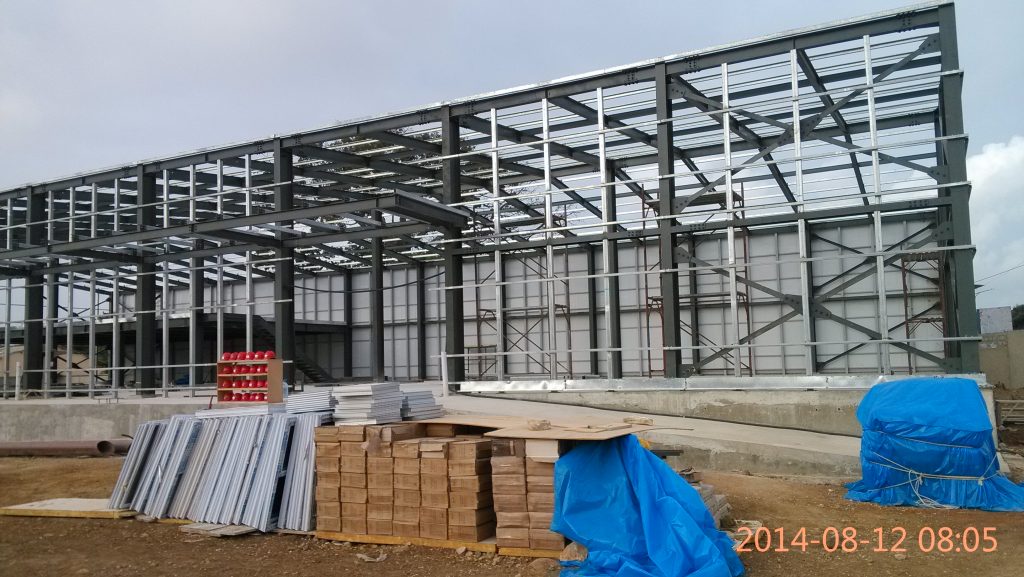
4.3 Waste-Minimizing Manufacturing Processes
Lida Group’s commitment to sustainability extends to its manufacturing facilities, where the company uses processes that minimize waste and maximize resource efficiency:
4.3.1 Prefabrication in Controlled Environments
Lida Group manufactures all steel components for its farm houses in state-of-the-art, climate-controlled factories using prefabrication. This approach offers several waste-minimizing benefits:
- Precision cutting: Using CNC (Computer Numerical Control) machines, Lida Group cuts steel components to exact specifications, reducing offcuts and scrap. Any scrap that is generated is recycled back into the production process, with a recycling rate of 95%—far higher than the 70% recycling rate of on-site construction.
- Reduced on-site waste: Prefabrication eliminates the need for on-site cutting, drilling, or mixing of materials, which often generates large amounts of waste. On-site waste from Lida Group’s farm houses is typically 5–10% of the total material used, compared to 20–30% for conventional construction.
- Weather-independent production: Factory prefabrication is not affected by weather conditions, reducing the risk of material damage (e.g., wood rotting in rain, concrete setting incorrectly in cold weather) that leads to waste.
4.3.2 Material Efficiency
Lida Group’s engineers use advanced design software to optimize the use of recycled steel, ensuring that every component is sized correctly to minimize material waste. For example:
- Finite Element Analysis (FEA): This software simulates the loads and stresses on each steel component, allowing engineers to design components that are strong enough to meet performance requirements but not oversized (which would waste material).
- Modular design: The modular nature of Lida Group’s farm houses means that components can be reused across multiple projects, reducing the need for custom-made parts that often result in waste.
4.3.3 Eco-Friendly Coatings and Treatments
In addition to using recycled steel, Lida Group uses eco-friendly coatings and treatments for its farm house components:
- Low-VOC (Volatile Organic Compound) coatings: The polyester powder coatings used on steel components are free of VOCs, which are harmful to the environment and human health. Unlike traditional paint, which releases VOCs during application and curing, powder coatings emit no toxic fumes.
- Non-toxic corrosion treatments: The hot-dip galvanizing process uses zinc, a naturally occurring element that is non-toxic and recyclable. Unlike some chemical corrosion treatments, galvanizing does not contaminate soil or water.
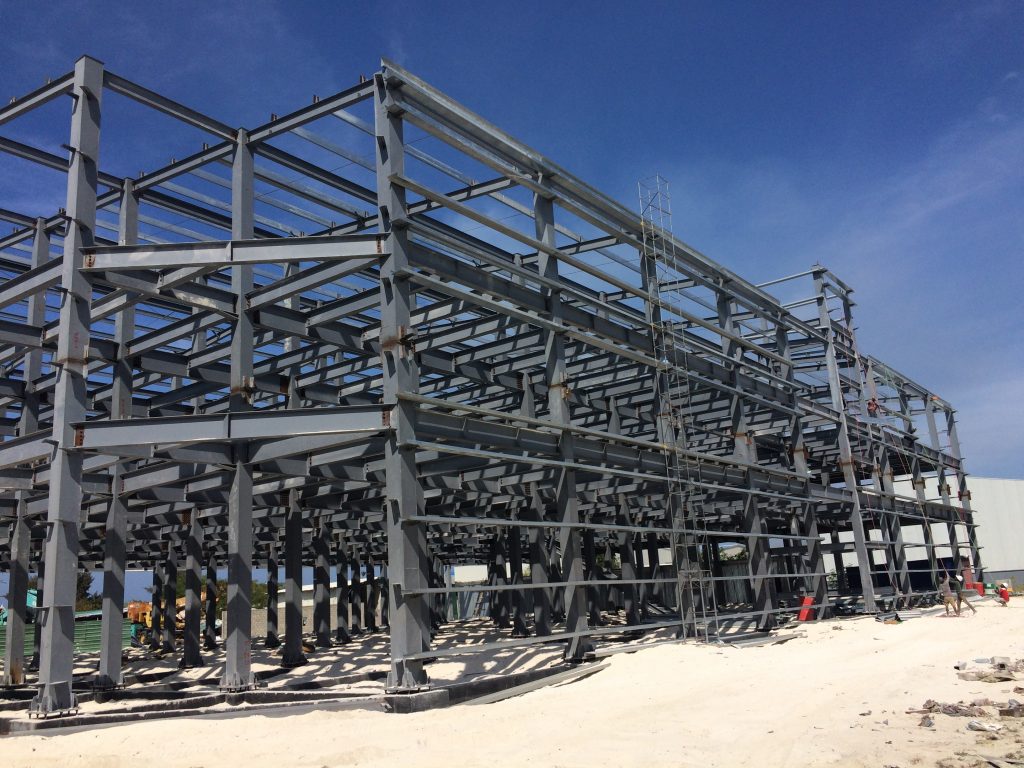
5. Case Studies: Lida Group’s Recycled Steel Farm Houses in Action
To illustrate the real-world impact of Lida Group’s eco-friendly farm houses, this section examines three case studies from different regions. Each case study highlights how the use of recycled steel and eco-friendly design has addressed specific sustainability challenges and delivered tangible benefits to farmers.
5.1 Case Study 1: Small-Scale Vegetable Farm in Kenya
Kenya’s agricultural sector is a key driver of the economy, but small-scale farmers face significant challenges: limited access to affordable, durable farm housing; water scarcity; and high energy costs. A small-scale vegetable farmer in Nakuru County (central Kenya) approached Lida Group to build a 120-square-meter farm house that would:
- Use eco-friendly materials to minimize environmental impact.
- Integrate water collection and storage to address water scarcity.
- Support solar energy to reduce reliance on expensive grid electricity.
Lida Group’s solution was a recycled steel farm house with the following features:
- Recycled steel frame: The frame was made from 100% recycled steel, sourced from end-of-life vehicles and construction waste in Kenya. The steel was hot-dip galvanized to resist corrosion in Kenya’s humid climate.
- Rainwater harvesting: A 10,000-liter recycled plastic tank was installed to collect rainwater from the steel roof, providing water for irrigation and household use.
- Solar integration: 10 solar panels were mounted on the roof, connected to a battery storage system that powers the farm house’s lighting, a small refrigerator (for storing vegetables), and an irrigation pump.
- Thermal insulation: The walls and roof were insulated with recycled polyester fiber, keeping the interior cool during Kenya’s hot summers (temperatures up to 30°C) and warm during cool winters (temperatures as low as 10°C).
Since the farm house was completed in 2022, the farmer has reported:
- 50% reduction in energy costs: The solar panels generate enough electricity to meet all the farm’s needs, eliminating monthly grid electricity bills of approximately $50.
- 35% reduction in water use: The rainwater harvesting system provides 70% of the farm’s irrigation water, reducing reliance on expensive municipal water.
- Increased crop yield: The refrigerator allows the farmer to store vegetables for up to 10 days (compared to 2–3 days previously), reducing post-harvest losses by 40% and increasing revenue by 25%.
- Environmental impact: The use of recycled steel saved approximately 10.5 tons of carbon dioxide emissions—equivalent to planting 58 trees.
5.2 Case Study 2: Livestock Farm in Australia
Australia’s livestock industry is a major contributor to the country’s economy, but it faces challenges related to climate change (e.g., droughts, heatwaves) and sustainability (e.g., high carbon emissions from conventional farm infrastructure). A livestock farmer in Queensland (eastern Australia) needed a 200-square-meter farm house that would:
- Withstand extreme heat (up to 45°C in summer) and drought conditions.
- Use recycled materials to reduce carbon footprint.
- Provide space for storing livestock feed and equipment.
Lida Group designed a recycled steel farm house with:
- Recycled steel frame and roof: The frame and roof panels were made from 90% recycled steel, with a polyester powder coating to resist corrosion from Australia’s harsh sunlight and salt-laden air (Queensland is a coastal state).
- High-efficiency insulation: The walls and roof were insulated with cellulose insulation (made from recycled newspaper), reducing heat transfer and keeping the interior cool in summer.
- Large water storage: Two 20,000-liter recycled steel tanks were installed to collect rainwater, providing water for livestock during droughts.
- Feed storage area: A 50-square-meter section of the farm house was designed to store livestock feed, with a steel floor that is easy to clean and resistant to rodent damage (unlike wooden floors).
Since the farm house opened in 2021, the farmer has experienced:
- 40% reduction in cooling costs: The insulation keeps the interior 8–10°C cooler than the outside temperature, eliminating the need for air conditioning and reducing electricity use by 40%.
- Increased drought resilience: The rainwater tanks stored enough water to keep livestock hydrated during a 3-month drought in 2023, avoiding the need to buy expensive water from trucks.
- Reduced feed waste: The rodent-resistant feed storage area has reduced feed waste by 25%, saving the farmer approximately $1,200 per year.
- Carbon savings: The recycled steel used in the farm house reduced carbon emissions by 18 tons—equivalent to taking 4 cars off the road for one year.
5.3 Case Study 3: Organic Fruit Farm in France
France’s organic farming sector is growing rapidly, with consumers increasingly demanding food produced with minimal environmental impact. An organic fruit farmer in Provence (southern France) needed a 150-square-meter farm house that would:
- Meet strict organic farming standards (e.g., no toxic materials).
- Integrate with on-site composting and waste management.
- Be durable enough to withstand occasional heavy rain and strong winds.
Lida Group’s solution was a recycled steel farm house with:
- 100% recycled steel structure: The frame, roof, and walls were made from recycled steel, with a non-toxic polyester powder coating that meets organic farming standards (no harmful chemicals that could leach into the soil).
- Composting area: A 20-square-meter attached module was designed for composting organic waste (e.g., fruit peels, plant trimmings), with a steel floor that is easy to clean and a ventilation system to reduce odors.
- Natural ventilation and lighting: Large windows and skylights provide natural light and cross-ventilation, reducing the need for artificial lighting and fans.
- Wind-resistant design: The steel frame was reinforced with diagonal bracing to withstand strong winds (up to 100 km/h) common in Provence during the winter.
Since the farm house was completed in 2023, the farmer has reported:
- Compliance with organic standards: The farm house has passed all organic certification inspections, allowing the farmer to sell fruits at a 20% premium (compared to non-organic fruits).
- Reduced waste: The composting area has diverted 80% of the farm’s organic waste from landfills, producing nutrient-rich compost that is used to fertilize fruit trees—reducing the need for organic fertilizers by 30%.
- Low maintenance costs: The recycled steel structure has required no repairs in its first year, unlike the farmer’s previous wooden farm house, which needed annual repairs costing approximately $800.
- Environmental recognition: The farm house was featured in a local sustainability magazine, increasing the farm’s visibility and attracting more customers interested in eco-friendly products.
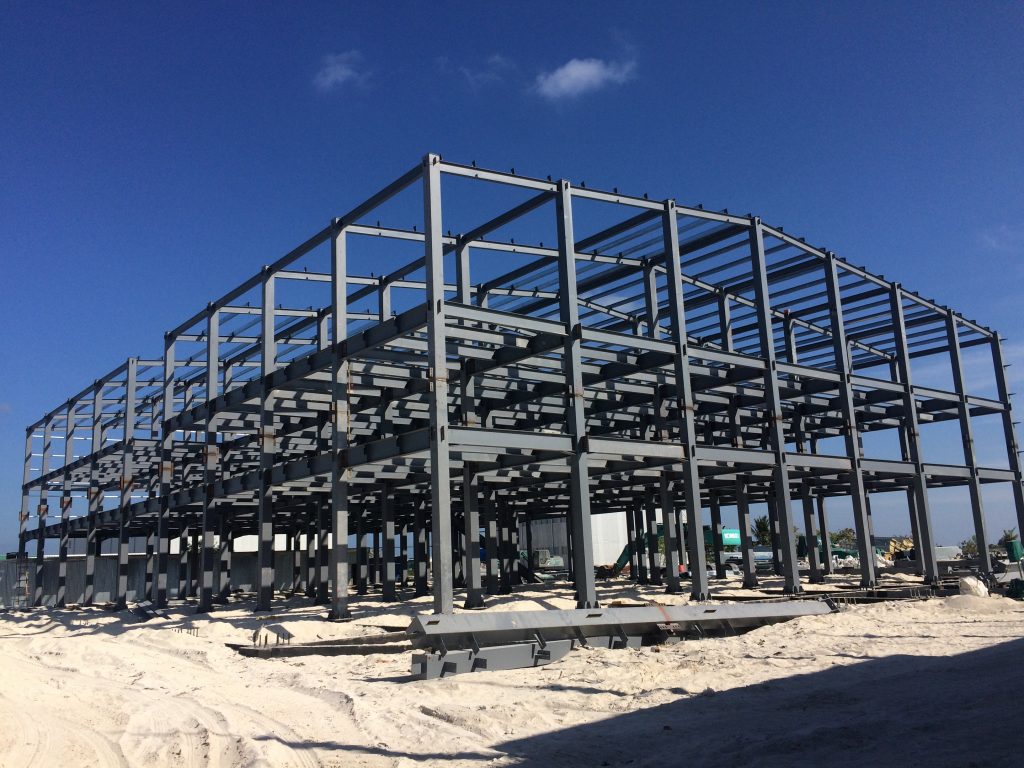
6. Industry Recognition and Certifications
Lida Group’s eco-friendly, recycled steel farm houses have earned widespread recognition from the agricultural, construction, and sustainability industries. These accolades validate the company’s commitment to sustainability, quality, and innovation.
6.1 Key Certifications
- ISO 9001:2015 Quality Management System: This certification recognizes Lida Group’s ability to consistently deliver products and services that meet customer and regulatory requirements. It covers all aspects of the company’s operations, from design and manufacturing to construction and after-sales support—ensuring that recycled steel farm houses meet the same high quality standards as conventional structures.
- ISO 14001:2015 Environmental Management System: This certification highlights Lida Group’s commitment to environmental sustainability. It covers the company’s use of recycled materials, waste minimization practices, energy efficiency, and water conservation—ensuring that every aspect of farm house production is eco-friendly.
- LEED (Leadership in Energy and Environmental Design) Certification: Many of Lida Group’s farm houses have achieved LEED Silver or Gold certification, one of the most prestigious sustainability certifications in the construction industry. LEED certification is based on criteria such as energy efficiency, water conservation, use of recycled materials, and indoor environmental quality.
- Global Recycled Standard (GRS): This certification verifies that the recycled steel used in Lida Group’s farm houses meets strict standards for recycled content (minimum 50%), chain of custody, and environmental and social responsibility. The GRS ensures that the recycled steel is sourced ethically and that its production does not harm the environment or workers.
6.2 Industry Awards
- 2023 Sustainable Agriculture Infrastructure Award: Lida Group won this award for its recycled steel farm house in Kenya, recognized for its innovative use of recycled materials and ability to address water and energy challenges in small-scale farming.
- 2024 Green Construction Award: The company’s farm house in Australia received this award for its exceptional energy efficiency and drought resilience, which align with global efforts to combat climate change.
- 2023 Organic Farming Support Award: Lida Group’s farm house in France was honored with this award for its role in supporting organic farming practices, including composting and non-toxic materials.
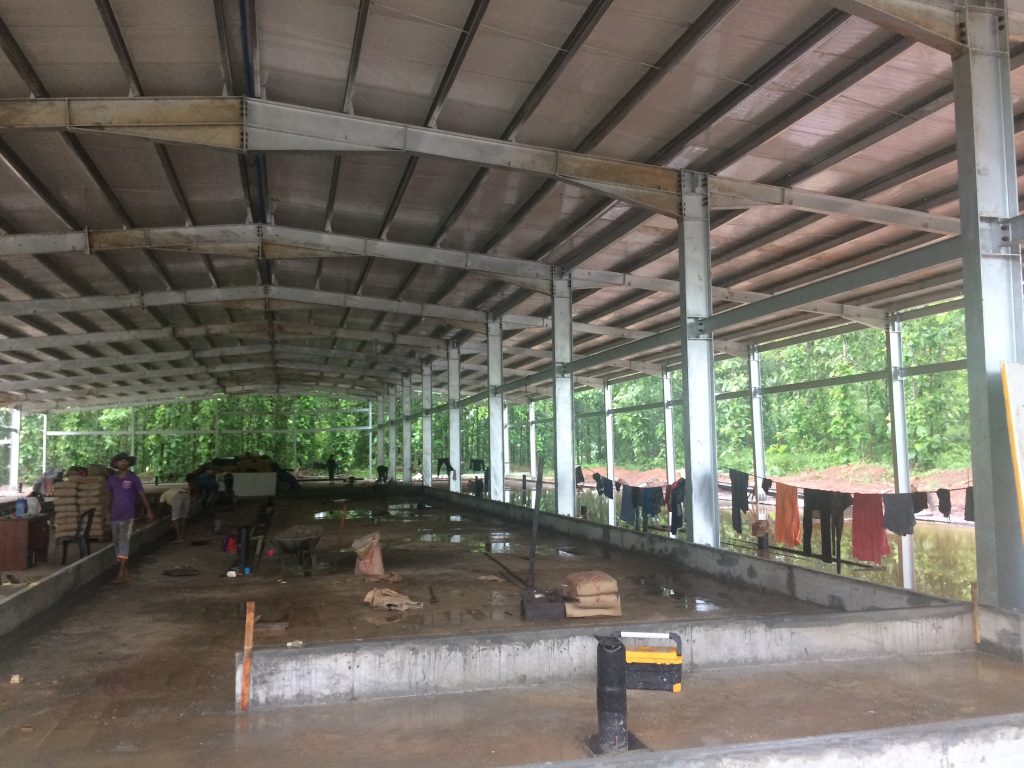
7. The Future of Sustainable Farming: Lida Group’s Ongoing Innovations
As the demand for sustainable farming continues to grow, Lida Group is committed to staying at the forefront of innovation. The company’s research and development (R&D) team is focused on three key areas to further enhance the sustainability and performance of its recycled steel farm houses:
7.1 Higher Recycled Content and New Recycled Materials
Lida Group is working to increase the recycled content of its farm houses beyond the current 90–100% for steel. The R&D team is exploring:
- Recycled composite materials: New materials made from a combination of recycled steel and other recycled materials (e.g., recycled plastic, recycled wood fiber) that offer enhanced properties, such as improved insulation or fire resistance.
- Recycled steel alloys: Collaborations with steel manufacturers to develop new alloys using higher percentages of recycled scrap (up to 100%) that offer even greater strength and corrosion resistance than current recycled steel grades.
7.2 Smart, Sustainable Technologies
The future of sustainable farming is increasingly digital, and Lida Group is integrating smart technologies into its farm houses to further enhance sustainability:
- IoT (Internet of Things) sensors: Embedded sensors will monitor energy use, water consumption, and indoor air quality, providing farmers with real-time data to optimize resource use. For example, a water sensor could alert the farmer when rainwater tanks are full, preventing overflow and waste.
- AI-powered energy management: Smart systems will use artificial intelligence to optimize the use of solar energy and battery storage, ensuring that energy is used efficiently and that excess energy is stored for later use (e.g., during cloudy days).
- Remote monitoring: Farmers will be able to monitor and control farm house systems (e.g., irrigation, lighting, temperature) remotely via a smartphone app, reducing the need for on-site visits and saving time and energy.
7.3 Circular Economy Integration
Lida Group is working to make its recycled steel farm houses fully circular, meaning that every component can be recycled or repurposed at the end of the farm house’s lifespan. Key initiatives include:
- Design for disassembly: The R&D team is developing modular designs that allow components to be easily disassembled (without cutting or damaging them) and reused in new farm houses. This eliminates the need for demolition and reduces waste.
- Take-back programs: Lida Group is planning to launch take-back programs, where the company will 回收 (recover) and recycle farm house components at the end of their lifespan, ensuring that they are repurposed into new steel products.
- Partnerships with recycling companies: The company is partnering with global recycling firms to create a closed-loop system for recycled steel, ensuring that steel from old farm houses is recycled into new steel for new farm houses—reducing the need for new raw materials.
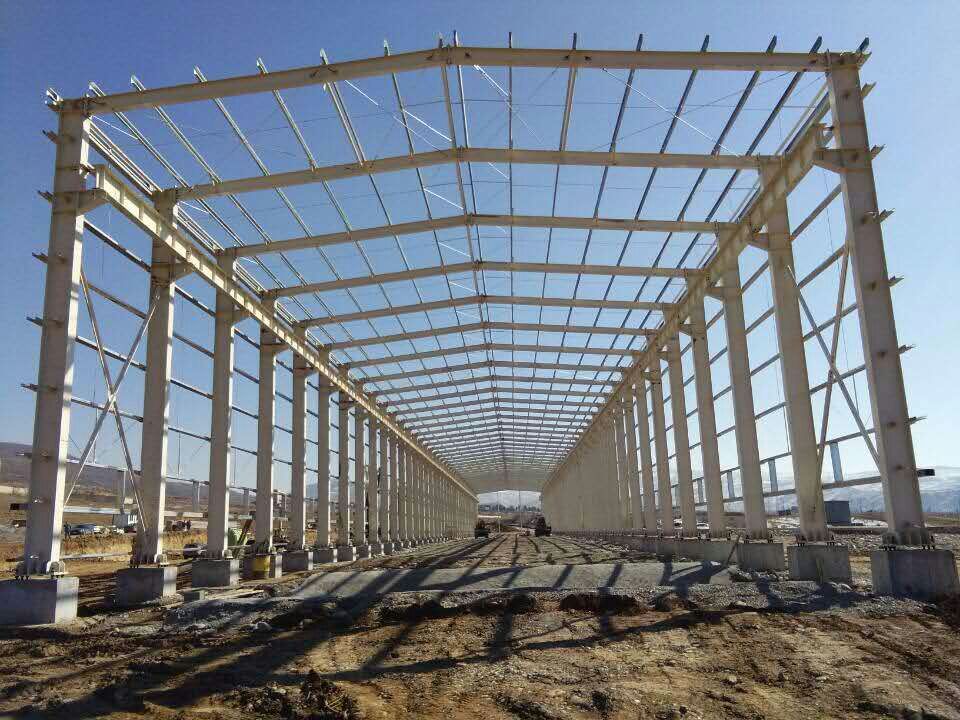
8. Conclusion
In conclusion, Lida Group’s eco-friendly, high-quality steel farm houses—built using recycled materials—are playing a transformative role in shaping the future of sustainable farming. By addressing the environmental shortcomings of conventional farm infrastructure, these farm houses are proving that sustainability, strength, and functionality can coexist. The use of recycled steel is at the heart of this transformation, delivering significant environmental benefits: reduced carbon emissions, conserved natural resources, minimized waste, and enhanced resilience to climate change.
Beyond recycled steel, Lida Group’s commitment to sustainability is evident in every aspect of its farm houses—from energy-efficient insulation and renewable energy integration to water conservation features and waste-minimizing manufacturing processes. These features not only reduce the environmental impact of farm infrastructure but also deliver tangible benefits to farmers: lower energy and water costs, increased crop yields, reduced maintenance expenses, and compliance with organic and sustainability standards.
The case studies from Kenya, Australia, and France demonstrate the real-world impact of these solutions, showing how Lida Group’s farm houses are addressing region-specific challenges—from water scarcity in Kenya to droughts in Australia to organic certification requirements in France. Industry certifications and awards further validate the quality and sustainability of Lida Group’s farm houses, giving farmers confidence in their investment.
Looking to the future, Lida Group’s ongoing innovations—including higher recycled content, smart sustainable technologies, and circular economy integration—will continue to push the boundaries of what eco-friendly farm infrastructure can achieve. As the global agricultural sector strives to meet the dual challenges of food security and environmental stewardship, Lida Group’s recycled steel farm houses will remain a critical tool for farmers seeking to build more sustainable, resilient, and profitable operations.
For farmers, agricultural organizations, and policymakers committed to a sustainable farming future, Lida Group’s eco-friendly steel farm houses offer a practical, scalable, and cost-effective solution. These farm houses are not just buildings—they are a statement of intent, a commitment to protecting the planet while feeding its growing population. In the journey toward sustainable farming, Lida Group is not just a provider of farm houses—it is a partner in building a better future for agriculture, communities, and the planet.

Related news
-
Why Global Logistics Firms Prefer Lida Group's High-Quality Steel Warehouses for Their Strength and Customizability.
2025-08-26 13:16:50
-
Agricultural Modernization Accelerated by Lida Group's Innovative Steel Frame Building Solutions for Modern Farm Houses
2025-08-26 10:20:24
-
Lida Group Sets a New Industry Standard for Durability with Its High-Quality Steel Structure Warehouse Designs.
2025-08-26 10:06:38
contact us
- Tel: +86-532-88966982
- Whatsapp: +86-13793209022
- E-mail: sales@lidajituan.com


